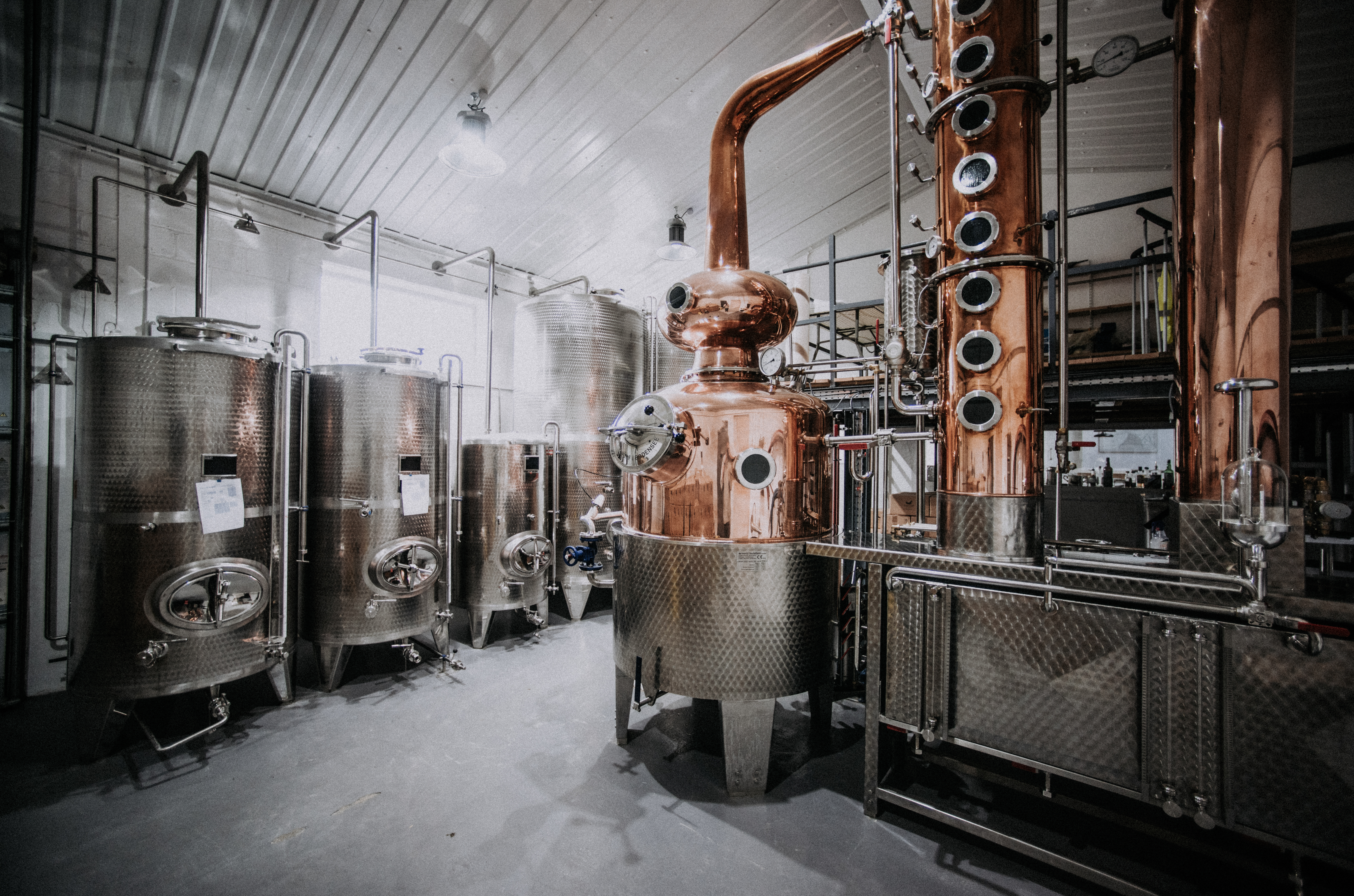Here at Thinking Drinkers Towers, we don’t follow fashion trends, we create them.
Two years ago, everyone laughed as we padded about the place in a pair of Dunlop Green Flash, a trilby and a Moroccan djellaba but, mark our words, everyone will be doing it this year.
But what should be drinking right now? To answer that, we blew the dust from our crystal balls, polished them up and peered into the spirit world to discover what the next ‘big thing’ is going to be.
What did we see? We saw a lot of things to be honest – sherry, Aquavit, Mezcal, brandy, world whisky, our reflections. Do you know what else we saw though? We saw Vodka.
Vodka may be the biggest selling spirit in the Western world but, having spent the last decade or so skulking in the shadow of the gin boom, it’s back – and quietly reminding us how brilliant it can be.
Unaged, distilled and filtered repeatedly to achieve smoothness and clarity, vodka is often dismissed as tasteless. True it’s this versatile neutrality that makes it such a key component in so many classic and contemporary cocktails – from the Cosmopolitan to the Espresso Martini, but in more recent times it has resulted in the neat spirit being overlooked in favour of fuller flavours.
It doesn’t help that it lacks some of the historical sex appeal of other spirits. It hails from the coarse, cold climbs of Eastern Europe and is stereotyped as the beverage of burly, brusque chaps with hefty tashes and shapka-ushankas. Beyond that though, much of the history is modern. Vodka swooped into American glasses after the Great Depression when aged spirits were expensive to produce and scarce, where it helped forge a lighter palate Stateside, the rest of the world subsequently followed suit and by the 80s had made it their number one spirit. Its rise to fame is associated with 20th century characters like James Bond, the Mad Men of Maddison Avenue and the Cosmo fans of Sex & The City. So it lacks the frontier cowboys of American whisky, the crazes 18th century gin fans or the swashbuckling pirates of rum.
But this image of neutrality is changing because new distillers are ensuring it’s now’s deceptively diverse. Distilled using everything from grains to grapes and milk to solar power, vodka delivers distinction when not drowned in cheap mixers and, having lost integrity in the hedonistic 90s, it’s grown up – embracing classic serves, traditional production techniques, authenticity, genuine quality and even talk of ‘terroir’.
A recent visit to the Black Cow Distillery (pictured) provided a real insight into what can be achieved with this spirit when the team behind it is inspired to bring about real innovation.
And guess what… it’s World Vodka Day on October 4th, making it high time you dipped into this special spirit. Before you get into trying the many marvellous expressions though, it helps to have a handle on what vodka actually is, so here are some quick fire pub ammo facts to impress your mates with in the boozer.
Origins
A mass debate surrounds the birthplace of vodka. Was it Russia? Was it Poland? Who knows? Not us. We weren’t there.
Russians play the etymological card. Vodka comes from the Russian ‘voda’, meaning little water, as in: “No dear, I’m not drinking, I’ve just had a little water”.
Poland, however, boasts the earliest written record, dating back to the 8th Century. Back then, they made ‘gorzalka’ but some reckon it was distilled from wine- much like brandy.
So, in summary, no-one’s sure. Let’s move on.
Distilling Decrees
Legally distilled anywhere in the world, there are no geographical restrictions to making vodka but it must be distilled to a minimum of 96%ABV and then diluted with water.
If it isn’t diluted, it will kill you. And give you the squits.
Grain Guide:
By law, vodka can be made from any fermentable agricultural product, which guarantees plenty of innovation. We’re currently tasting Black Cow vodka with thousands of theatre-goers in our show, and that’s distilled from 100% cow’s milk.
Potato: Rounded mouth feel, smooth and silky.
Rye: Mellifluous but with a spicy kick.
Wheat: Soft citrus often with a fresh aniseed-y finish
Barley: Crisp and clean
Corn: Buttery, full-bodied and sweet
Onion: Onions. Don’t bother.
Rapper’s Delight
Ciroc Vodka, made from grapes, is part-owned by hip-hop legend Sean “Puffy” Combs.
P Diddy? Only when he drinks a lot of it.
That ‘funny’, which we wrote, was voted the worst joke at the 2014 Edinburgh Fringe Festival.
Still Life
Unlike rum and whisky, distilled using pot stills, vodka is produced on tall column stills containing several plates which extract alcoholic compounds and congeners – organic compounds that adorn alcoholic drinks with flavour.
In the pursuit of purity, some vodka-makers expel these ‘impurities’ through distillation or filtration using various fining agents – from egg, fish bladder and soil to algae, lava rock, silver and gold. But, in most cases, charcoal.
But, increasingly, vodka distillation is all about coaxing out character and the essence of the base ingredients in their quest for flavour, personality and provenance – these days, there’s even talk of terroir.
It’s always useful to drop the word ‘congeners’ into geeky vodka conversations as it will convince people you know your shit.
Mashed Swede
In the 18th Century, the herring-eating, shoe-removing, flatpack-assembling Swedish botanist Carl Linnaeus said of vodka: “This drink has a magical power. It strengthens the weak and revives those who have fainted. Those tired after work and physical activity can return their life forces by this drink much sooner than by nourishment. It works as a diuretic, an appetizer, an anti-toxin.”
Later, he revised his prognosis by adding: “The miserable vodka drinker gets out of bed in the morning depressed, shaking, melancholy, and sick in all his limbs…”



